|
|
Post by Nilsfr91 on Aug 20, 2022 11:14:35 GMT -5
Regarding the RAM flightplans: my recently remastered RAM fleet includes the 90's livery across the fleet, especially the missing 737-200/-400/-500/-700/-800 paints and the ATR42. |
|
|
|
Post by chasensfo on Aug 21, 2022 5:38:01 GMT -5
When was that uploaded? I guess I didn't see it when I downloaded your RAM fleet a while back. Thanks for that.
|
|
|
|
Post by Nilsfr91 on Aug 21, 2022 7:33:30 GMT -5
When was that uploaded? I guess I didn't see it when I downloaded your RAM fleet a while back. Thanks for that. I finished uploading the updated fleet 2/3 weeks ago, here's the link to the repaints: drive.google.com/drive/folders/1rl0wQXcCLrTKha47feWtrkDZlXTQNaVo?usp=sharing. Here's the thumbnails for the 737's and ATR in question, you'll see on my drive that there's also now the 747-200/-400 fleets and the 757-200 and 767-300ER fleets.      |
|
|
|
Post by bensplanes on Sept 2, 2022 15:21:49 GMT -5
Fantastic work! Was hoping that I would see the triple 7 in MCO with these plans. Many thanks.
|
|
|
|
Post by chasensfo on Sept 3, 2022 0:57:59 GMT -5
Fantastic work! Was hoping that I would see the triple 7 in MCO with these plans. Many thanks. Yeah, neither cmd320's schedule nor my OAG (a few months apart) had them listed, turns out they were pilot training/route proving flights that were ad-hoc purchasable flights known in the industry as "extra sections", so some lucky bastards booking last minute or flying standby probably got an empty 777 to themselves many times as flights went on for weeks. NRT and LGW were crew and FAA on board only. Tho I try to create variety at the aircraft factory airports, Continental was getting 757-200s, 777-200s, and 737-500/700/800s all delivered left and right in 98 and 99, so I figured I should represent them well. I will soon release my ADEs for the Boeing Airports by Drzewiecki Design which will create all real-life parking (including the massive GA parking at all 3 Boeing airports) and take away a few areas at PAE that were not built yet (West of the runway). I have also completed all the widebody flightplans, working on the BFI and RNT stuff slowly but surely. This way you can test any Boeing plane in the livery of your choice and do touch and goes or whatever you want realistically, fly back from PDX with fresh paint, whatever. I will eventually adapt these 1998 plans to different versions representing different times in the 80s-2000s as the flightplans can easily be used in any era as the testing has been the same for decades. Same with Airbus, ATR, Embraer and Douglas. The reason I am going to now have delivery flights use "RAMP,GATE" is they will be assigned ramp parking on delivery outside the hangar at hubs (hence "XCOA" so they don't park on pax gates) but at BFI/PAE the delivery flights will park on the gates (ideally) at the delivery center, space permitting as some days there will be more than 2-3 at the airport ready for delivery like real life. Boeing planes are all testing with Boeing callsigns, only actual plans for airlines will have delivery flights. The UA 767 in the background is at the delivery center in the first screenshot at PAE ready to ferry to SFO. Best I can tell, it seems cargo 757s were finished (interior) and delivered from PAE but the rest used BFI.  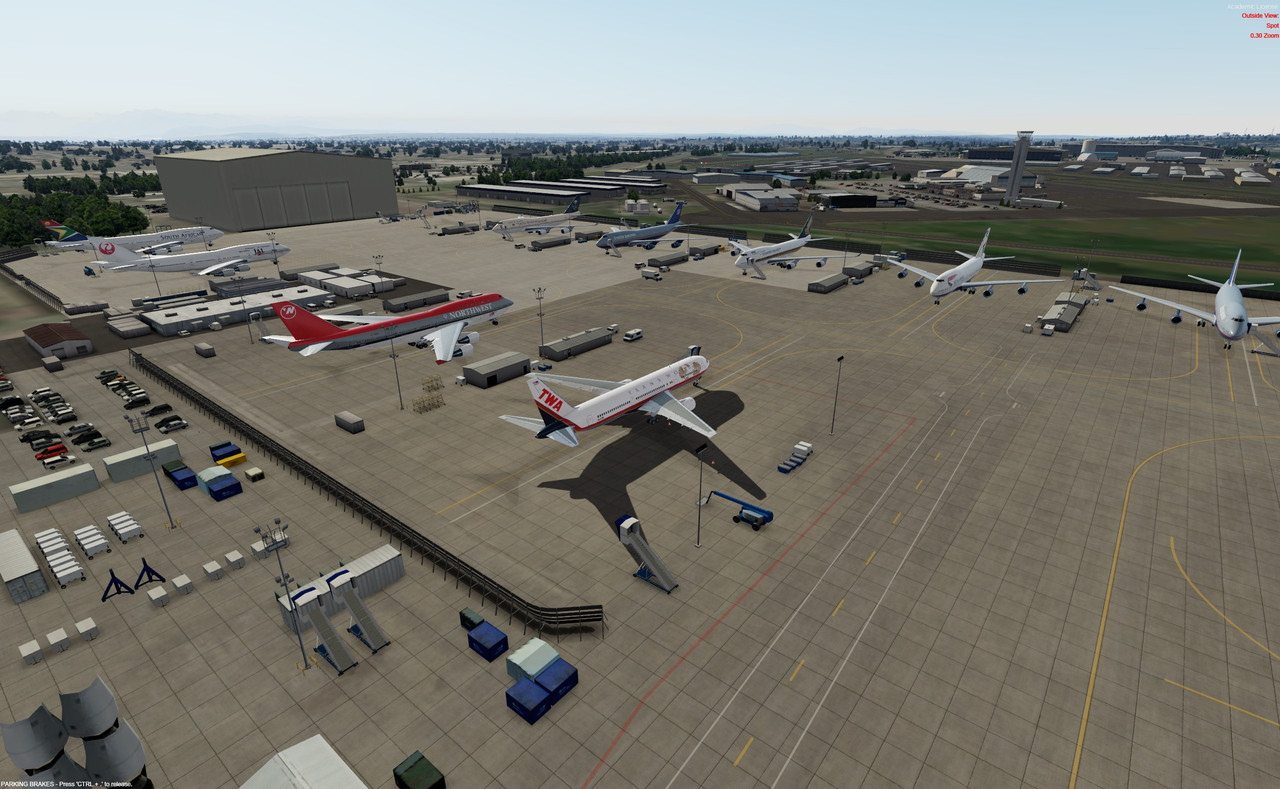 Also, I updated the AIG DC-9-30 link for Continental, I am just going to host it until we find the author. Screw using an AIA DC-9 lol. |
|
|
|
Post by chasensfo on Sept 10, 2022 19:32:53 GMT -5
\\LAMCASA - Mexicana de Carga 1998 LAMCASA - Mexicana de Carga (1996-2004) IATA: NONE LISTED ICAO: LMC CALLSIGN: LINEA DECARGA Línea Aérea Mexicana de Carga, S.A. de C.V., better known as LAMCASA - Mexicana de Cargam was a short-lived Mexican cargo airline based in Mexico City (MEX). The carrier started life after acquiring 2 Convair 240s in 1995 from Aero Internacional S.A., a Mexican cargo carrier which appears to have been involved with the foundation of LAMCASA, and a Convair 440 which had been stored in Tucson, and before that Miami, possibly for decades prior to this purchase. Flights began on domestic cargo runs to large and mid-sized Mexican cities and Texas cities along the Mexico border in 1996, mostly operating at night as is common in the air cargo world. In 1997, 1 of the CV-240s was written off in a landing accident in Nuevo Laredo-Quetzalcóatl (NLD), which both crew members survived. The following year in early 1998, the other CV-240 was lost after an uncontained engine failure lead to a massive fire in the right wing and the aircraft crashed in a field on a failed attempt to return to MEX, killing both pilots. Interestingly enough, rather than suspending operations with it's lone CV-440, the carrier decided to expand and had 2 A300s converted into freighters at Bristol's Filton Airport (FZO) in England and expanded rather massively (albeit briefly) now flying as far as Miami (MIA) and Los Angeles (LAX) with the new pair of heavy jets. One A300 wore a blue livery while the other featured a red livery. As the only photos that exist of the A300s were in England and there is very little information on the airframes while registered to this carrier, it is apparent that the flights operated under the cover of darkness and were short-lived. By early 1999, one of the 2 A300s we being flown on behalf of TACA Cargo by another airline named ACS, and the fate of the other is unclear, presumably stored somewhere in Mexico. It is also unclear how much longer the CV-440 continued flying past the 1990s, if at all, but it, too, was stored for most of the last few years that the carrier existed until 2004 when the company dissolved. The founder made an attempt to re-start the carrier in 2005, even acquiring a 727-200 wearing a new livery which was stored in MEX, but the founder sadly died very soon after the aircraft was acquired and the other parties involved in the start up decided not to follow through, thus no revenue flights were ever operated. Routes are real, it is possible that there were additional routes flown, however. Times and flightplans are representative. As far as I can tell, repaints are still needed. A300B: 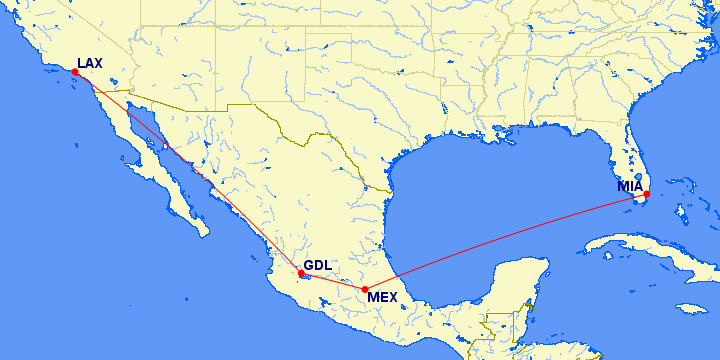 CV-440\240: 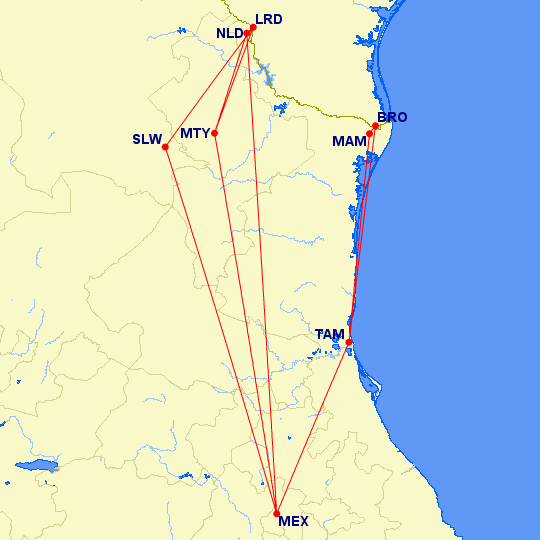 Download LAMCASA - Mexicana de Carga 1998 Flightplans Here Download LAMCASA - Mexicana de Carga 1998 Flightplans Here |
|
|
|
Post by chasensfo on Oct 13, 2022 5:09:46 GMT -5
\\British Midland 1998 v2 (13OCT22; Re-done with new aircraft order for better parking, AIG standard cruise speeds, various livery variations added for new repaints) British Midland (1938-2012) IATA: BD ICAO: BMA CALLSIGN: MIDLAND British Midland Regional operated by Business Air (1998-2001) IATA: BD\II ICAO: GNT (Use BMAX,BMA codes for AI parking) CALLSIGN: GRANITE Formed in 1938, EMA-based British Midland (also known as BMA) was one of England's longest-surviving airlines and was for many decades a fierce domestic and regional rival for British Airways. Chasing a modern fleet most of its history, the carrier operated about 2 dozen aircraft types, including most notable 60s props like the Viscount which were popular in Europe. DC-9s and 737-200s became the mainstay of the fleet through the mid-1980s when British Midland became added 737-300s followed by very early examples of the newer 737-400 and 737-500 into the early 1990s. Shorts SD3-60s which had been flying for some time in the system were still active into the early 1990s and help the carrier expand across Western Euorope, while at least one Viscount was around long enough to receive the 1986-introduced blue-top livery. That livery was modified in 1995 with the arrival of the first Fokker 100s to feature a modified livery with a red stripe through the white fuselage stripe, and this livery was worn fleet wide by 1997. By late 1997, a new livery was introduced with a dark-grey belly and some other modifications. By this time, British Midland had retired the older generation of aircraft with the BAe ATPs and Shorts 360s having been replaced with Saab 340s and the 737-200 and DC-9 having been replaced with 737-300\400\500s, A321s, Fokker 70s, and Fokker 100s. Most routes were flown with high frequency, though international flights to Nordic cities and Eastern Europe tend to be flown only once or twice daily. 737-500s were the backbone of the fleet, serving most international destinations, but international fights from secondary English cities such as GLA, EDI, LBA, and EMA were often operated by Saabs and Fokkers. The Saab 340s were operated by English carrier Business Air, trading as British Midland Regional. The airline had a weekend hub in Jersey(JER), with the vast majority of routes and flights operated only on Saturdays and Sundays. Some of the routes from JER saw up to 4 flights in a single hour on Saturdays, often with Saab 340s departing ahead of jets and being passed en route. 737-400s and A321s were, for the most part, dedicated to a few high-density routes where the extra capacity was needed. While scheduled flights were operated to many leisure destinations like FAO, PMI, and AGP, the airline also flew charter flights to holiday destinations like PMI and TFS with 737s, and these flights are included. The A321s were brand new, and 2 were operated at the time with a 3rd wet-leased to Air 2000 in full BMA colors with "Air 2000" titles after being flown by Constellation Airlines of Belgium with their titles just prior (That A321 is included in the Air 2000\Constellation Airlines flight plans). In 1998, a few planes still wore the old light-grey belly 1995 livery while most wore the 1997-introduced livery with a dark belly and other modifications. In addition, most aircraft wore a 60th-anniversary sticker while some did not have it applied yet in 1998. 2 737s in the old 1995 liveries also wore "The Airline for Europe" titles on the fuselage, which were introduced in 1997 and only applied for a short time on most of the fleet well before 1998 began. Some realistic ferry flights were created to squeeze in some of the flights which did not fit. BMA would eventually change its name to BMI(British Midland International) and add a vast regional network, an LCC(BMI Baby), and long-haul flights with 767s and A330s along with several rapid livery changes in the years after 1998. BMI joined the Star Alliance in 2000 as the first UK member and the eventual success of the carrier would see it ultimately merged into British Airways in 2012. Business Express transitioned into flying on behalf of British Airways and Saabs began appearing in the full BA World Colours liveries in 1999, the British Midland Regional operation flown by the Saab 340s ended in the Spring of 2001. All repaints are done with a lot of variations. However, at this time there are no versions with the late 1990s "60 years" stickers. All repaints are by Nils Gosselin unless otherwise noted. The following repaints are available: FAIB A321: drive.google.com/drive/folders/1nXNuLNDQCc71Oqo6Fu9WujYloO1ZFnAi?usp=sharing FAIB 737-300 fleet: drive.google.com/drive/folders/1d5EtxSHpZ3Fc19liqa7_3kvR_gGJDFOF?usp=sharing FAIB 737-400 fleet: drive.google.com/drive/folders/1w7n31b-k1e7Pe9ds_eOEK2A6pxyZb8el?usp=sharing FAIB 737-400 1995 livery airline for Europe (by Florian van der Kleij): drive.google.com/file/d/1BGmcOd4QlJ5ep6dZwQWIUNV4_xqHglAa/view?usp=sharing FAIB 737-500 fleet: drive.google.com/drive/folders/19U-AxiJfr7SI4B7UZLpmqthRZ9kkcOKO?usp=sharing FAIB 737-500 1995 livery airline for Europe (by Florian van der Kleij): drive.google.com/file/d/1tGKhvgGeQ0gF4sfqT9Dmvzc2O5IU6y_4/view?usp=sharing AIA Fokker 100 fleet (by Florian van der Kleij): drive.google.com/file/d/1Og3qS2etKgihNaosFcG4ljUNcQfrfO8i/view?usp=sharing AIA Fokker 70 fleet (by Florian van der Kleij): drive.google.com/file/d/1_ZZ5kCs_bkvVJElRLB7K769DCpmP8KTb/view?usp=sharing TFS Saab 340 fleet (by Florian van der Kleij): drive.google.com/file/d/1IZYdq0kvrsFOYuW1WcifZDYd5xFqedIh/view?usp=sharing A321: 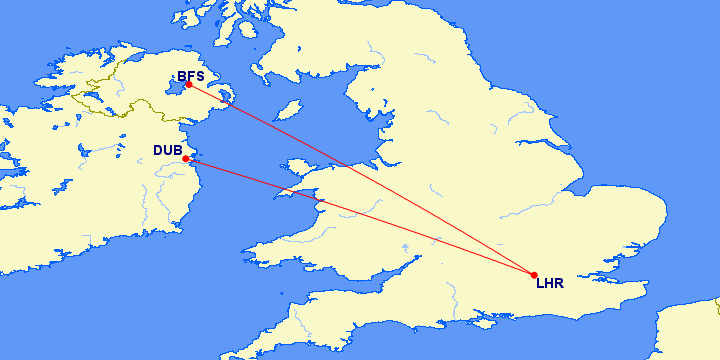 737-300:  737-400: 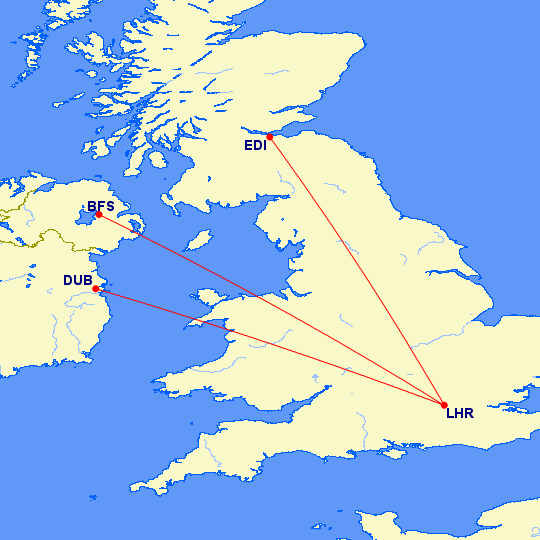 737-500: 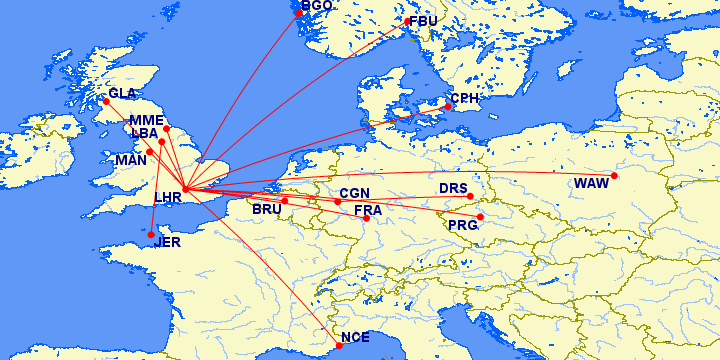 737-300\400\500 Charters: 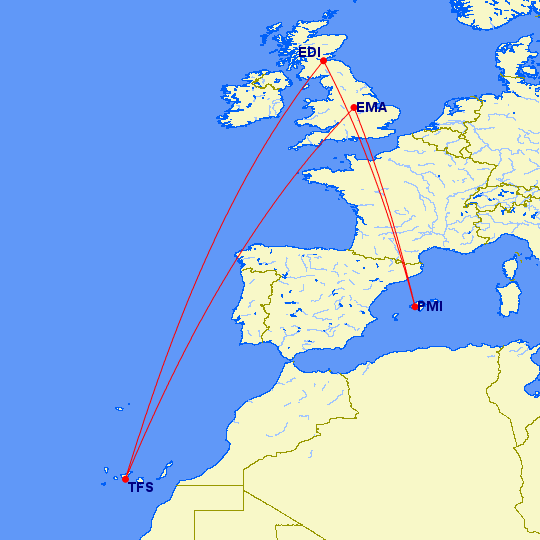 Fokker 100: 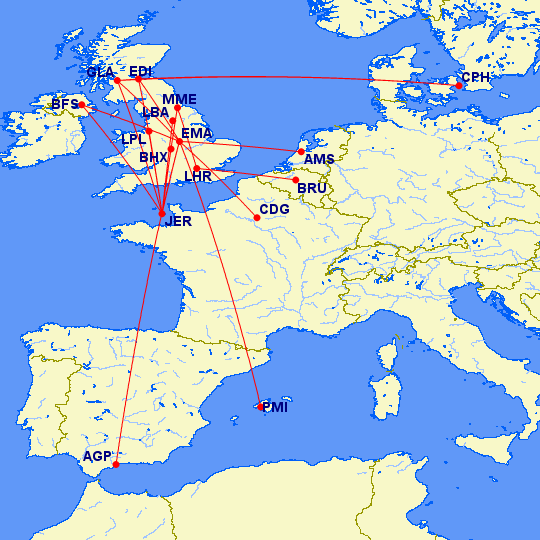 Fokker 70:  Saab 340 operated by Business Air: 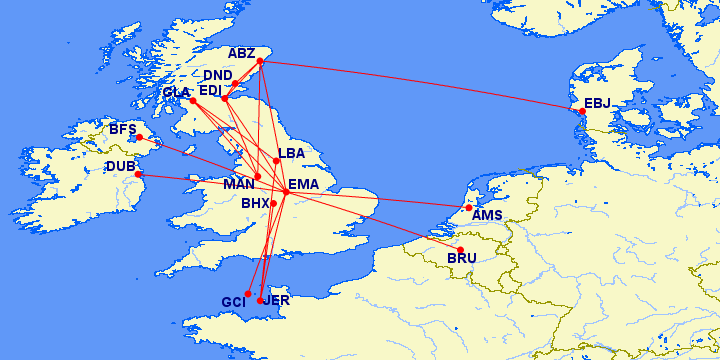 Download British Midland 1998 v2 Flightplans Here Download British Midland 1998 v2 Flightplans Here |
|
|
|
Post by perficad on Oct 13, 2022 9:08:58 GMT -5
They were a big player at the time here in the UK. What is better aircraft order? How is this decided? Do you have a link from AIG?
|
|
|
|
Post by chasensfo on Oct 13, 2022 21:10:32 GMT -5
They were a big player at the time here in the UK. What is better aircraft order? How is this decided? Do you have a link from AIG? For each traffic.bgl file, the sim reads from the top/lowest AC# on down when plotting aircraft. So if you have airports that have a limited number of larger gates, and the 747 is on the bottom of a traffic file, it won't show up as the only gate with the 747's parking radius will be taken up by something else already. Many airports, especially in the 80s and 90s, had limited large aircraft parking. Especially at African hubs, parts of Asia and even in Europe and the US where airports like PHX or SAN for example only have 1-2 747 gates but were both served by British Airways 744s. The more you ensure your traffic.bgls ae listed from largest to smallest (both numerically and in physical order), the better/more realistic your AI parking will be. And the cruise speeds affect how the AI behaves when spawned/tracked and can lead to issues like the planes not arriving or whatever. I only edit cruise speeds if they're at 200 or something low enough to make them behave unrealistically, and I just change them to 277/377/477 depending on the aircraft and only do the AIG standards when I create plans myself. But I do change the aircraft order for most airlines when I install plans by other people and there are noticeable results. Everyone should just be making plans that way anyway, it's been talked about here and at AIG for years but for some reason I guess word doesn't get our or people don't care, I'm not sure. But this is why one big massive .bgl is also bad, so for Alec's global traffic for example, I split up each airline into it's own file. Makes it easier to have them substitute into other decades too. |
|
|
|
Post by perficad on Oct 13, 2022 22:28:59 GMT -5
Interesting. I don't really understand why this a traffic bgl issue though? If there are not enough 747 gates then surely that's an ADE issue to make another gate? It wouldn't matter where they were in the traffic file if the correct number of gates available? I've only ever had my AI in one bgl, not even tried it split before, but I've never noticed any missing aircraft unless my ADE has an inadequate number of gates
|
|
|
|
Post by chasensfo on Oct 14, 2022 0:54:36 GMT -5
Interesting. I don't really understand why this a traffic bgl issue though? If there are not enough 747 gates then surely that's an ADE issue to make another gate? It wouldn't matter where they were in the traffic file if the correct number of gates available? I've only ever had my AI in one bgl, not even tried it split before, but I've never noticed any missing aircraft unless my ADE has an inadequate number of gates Ok, let me put it this way. 1998 SAN used to have 1 747-400 capable gate, and BA flew PHX-SAN-PHX with a 747-400. So lets say, hypothetically, BA would have a 747 and a 757 on the ground at the same time in SAN, and the BA 757s are AC#1 and the 744 is #2. If you have 1 747 gate at SAN, the cargo spots that may technically fit the aircraft are occupied, and BA is only coded on the medium and heavy-sized 2 intl gates at SAN (back then). Depending on how the load plays out, you will either see the 747 in the correct place, possibly on a cargo stand if it was able to "bump" out a smaller cargo plane, or you won't see it at all because the 757 will spawn on the 747's gate as it loaded first to the "BAW" code and then there was no spot to load the 747 in. So that is not an ADE issue, that is an issue where the real-life parking doesn't match what the sim thinks it needs to do. What is much more common is it forcing wrong parking, like planes on the wrong gates for that airline, or aircraft using the wrong type of parking (ramp, gate, mil_cargo, etc). Trust me, you're doing the very early 1980s, very light traffic at most airports compared to today. If you load up 1998 or 2022 traffic or something, it makes a huge difference. I've backdated 50+ airports now for the 90s, 80s, and 2000s and a few times at airports like KWI or something I noticed planes not loading, this was always the case. Fixed it always. It's worth the effort to do it the right way, or else you may have B1900s bumping 737s off the only 50ft+ radius gate at an African airport or something that you may never see, but someone else will and might as well have it working properly. It thus becomes less important to have a super realistic ADE file if all the plans are done like this as well, technically, as the parking is more efficient. I only learned all this in the last few years, that's why I can attest to it working. Because I saw it, especially with 1991 and other years where I had everything on one massive .bgl from Alec's awesome OAG plans. |
|
|
|
Post by chasensfo on Oct 15, 2022 2:26:34 GMT -5
***NOTE**** These are plans to be used in place of the previous Air Madeira 1999 plans, as I decided since I could easily paint the hybrid L-1011 that it would be cool to have a 1998 version of this carrier with that lone L-1011 also. Use one or the other unless you want the L-1011 doing a lot of the same routes during the week as the other one lol. Personally, I am using this in my 1996/97 traffic then I am using the 1999 plans with the 737 and 757 as my 98/99 traffic. \\Air Madeira 1998 (Air Zarco) Air Madeira\Air Zarco operated by Air Luxor (1997-1999) IATA: MM ICAO: MMZ CALLSIGN: AIRLUXOR Today's EuroAtlantic Airways, a well-respected Lisbon (LIS)-based Portuguese charter and wet-lease operator with dozens of airline customers around the globe, was once a tiny start-up with a single L-1011 when founded in 1997. The airline was born from opportunity, with national carrier TAP Air Portugal deciding to lease out L-1011-500 CS-TEB more often than fly it by the mid 1990s. The L-1011 started life with TAP in 1983, and served with the airline exclusively until 1995 when TAP began leasing it to a series of carriers, starting with a 3-month stint with Tajikistan International Airlines in 1995 operating flights to London (LHR) for that carrier. Over the next year or so, the L-1011 flew for Caribjet, Air Mauritius, Royal Jordanian, and finally a 1997 sublease to Air Luxor to be operated on behalf of a new Portuguese travel company named "Air Madeira" but doing business as Air Zarco. Though the L-1011 operated for TAP in an albino version of their livery at one point, Air Zarco received the aircraft in the full TAP livery, and the TAP logos were simply painted over for the first flights of the carrier in late 1997 and early 1998. The airline started out providing lift for holiday package tours and other carriers, namely TAP initially. Initial routes flown by the airline were out of LIS or Faro (FAO) to New York (JFK), Glasgow (GLA), Stuttgart, Nuremberg, and Amsterdam. Through 1999, the L-1011 appeared in a variety of liveries, including an Albino livery, then receiving what would become the EuroAlantic tail logo with no titles, then wearing both Air Zarco followed by Air Madeira titles. The carrier operated numerous flights both across Euorpe and abroad to places like the USA and Brazil over the next few years on regular TAP services. Just before 2000, the L-1011 was operated directly by the carrier and a few months later, the airline became EuroAtlantic Airways and began to specialize in leasing the aircraft out to operate on behalf of other airlines, such as BWIA West Indies of Trinidad. The carrier expanded rapidly, eventually operating everything from Hajj flights to JED for Nigerian carriers to Cubana flights with very few examples of 777-200, 757-200, and 737-800s at one time along with a robust fleet of 767-300s. Today, the carrier is active operating various services for carriers such as the Oakland (OAK) route flown by Azores Airlines. For now, just 2 repaint options with the limited AI L-1011s out there. Henrique Martins\Jonathan Alba have painted the DWAI L-1011 (not -500, the stretched version) in the full final colors of this carrier before it became EuroAtlantic, while I have modified Michael Pearson's CDAI TAP L-1011-500 into the 1997/98 livery first worn by this carrier with no TAP titles. DWAI L-1011 1999 by piper: www.dropbox.com/sh/nlzazhvlfuwps76/AAAvTrjPULoAP0b155y9tOp8a?dl=0CDAI L-1011-500 1998: drive.google.com/drive/u/1/folders/14_m4P-DJIoyH0JMYmQij09tmyTOsLgLTL-1011-500:  Download Air Madeira 1998 Flightplans Here Download Air Madeira 1998 Flightplans Here |
|
|
|
Post by chasensfo on Nov 4, 2022 5:54:55 GMT -5
Slowly but surely, I will update the Japan plans for Michael Pearson's recent paints and get Ranmori's missing paints uploaded. \\Japan Asia Airways JAA 1998 v3 (04NOV22; re-did the aircraft list to accommodate the fleet repaints by Michael Pearson, gave the special livery jet a more busy weekly plan, changed cruise speeds to AIG standard) Japan Asia Airways JAA (1975-2008) IATA: EG ICAO: JAA CALLSIGN: ASIA Japan Asia Airways (Nihon Asia Koku in Japanese), better known as JAA, was one of many spin-off subsidiaries that major airlines created in order to serve both Taiwan and mainland China. JAA was formed in 1975 in order to resume flights to Taiwan which had recently been suspended in order to appease China, and aircraft began to appear in the standard JAL livery but with JAA titles and logos. Initially, a DC-8-62 was used, but DC-10s and 747s joined soon afterward. By the summer of 1998, the fleet was mostly operated by 747-200s and 767-300s, with just 1 DC-10-40 and 747-100 left along with a pair of 747-300s. Other aircraft were frequently leased back and forth between JAL and JAA as needed, but of course, needed re-branding before flights to Taiwan would begin. A hub was established in TPE, and services were operated from TPE to several other airports in the region along with KHH and several daily flights on the high-density TPE-HKG route. The DC-10-40 was no longer flying to Taiwan in 1998 and was instead used on a KIX-CGK-DPS-KIX route. The aircraft often had long ground times in TPE, and there will always be a few of them sitting around. In 1998, it was common for aircraft to do training flights to Shimojishima(SHI\RORS) where they would practice approaches, so 2 of the aircraft do this once weekly during periods of several days of ground time. JAA would continue flying with 747-300s and 767s until 2008 when China relaxed its agreement with JAL to allow for flights to Taiwan and there was no longer for JAA, which was merged back into JAL. The one remaining 747-100 wore a special "children's" livery at the time, the rest of the fleet adopted a 1998-introduced modification of the 1993 livery which gave the aircraft new fuselage titles closer matching those of JAL. No aircraft with the "JAA" titles in lieu of the standard tail logo were left by the late 1990s. All repaints are completed by Michael Pearson (Ranmori's paints are for the 1993 fleet): FAIB 747-300: drive.google.com/file/d/1_zqJaeyDktrjuHrRR1GFZqmnHHdJan8x/view?usp=share_linkFAIB 747-200 fleet (uses 747-100 model): drive.google.com/file/d/1_pkYJQNy2CNXUr7LA-kqpTPYoO97_RVq/view?usp=share_linkFAIB 747-100: drive.google.com/file/d/1a1DXiNthzKBqglCg5GGIITVLqf0ogZ2V/view?usp=share_linkEVAI DC-10-40: drive.google.com/file/d/18qgt8kMpT19l3_8YP4zL55hYbc_ecnWV/view?usp=share_linkFAIB 767-300 Fleet: drive.google.com/file/d/1UA-xx4xQpQPtA8r07pod1mijn_LjHTcW/view?usp=share_link747-300: 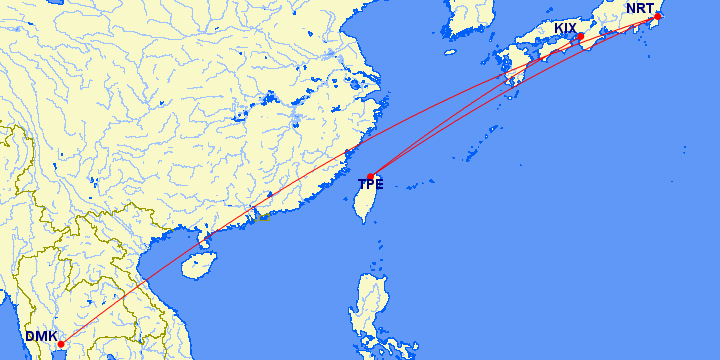 747-100\200: 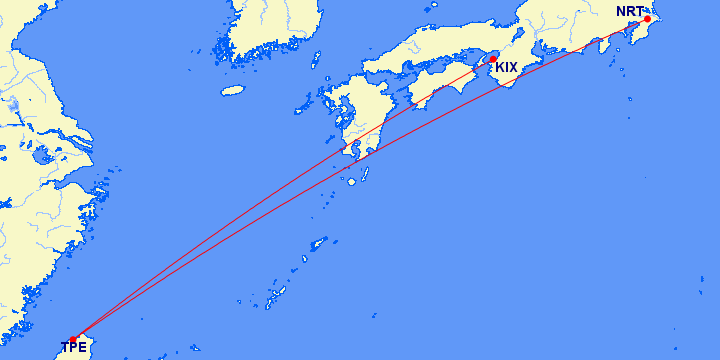 DC-10-40: 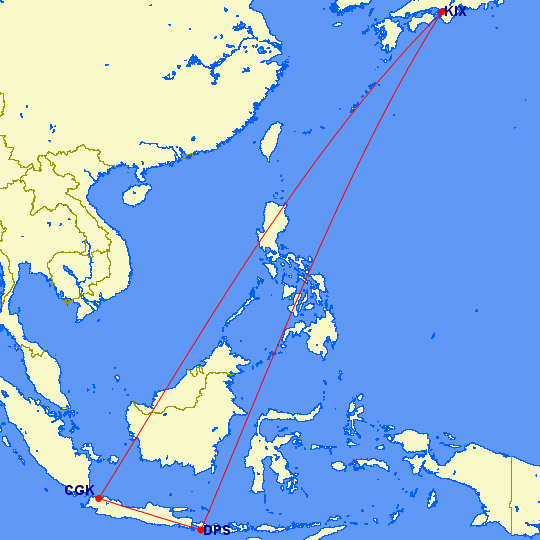 767-300:  Download Japan Asia Airways (JAA) 1998 Version 3 Flightplans Here Download Japan Asia Airways (JAA) 1998 Version 3 Flightplans Here |
|
|
|
Post by chasensfo on Nov 19, 2022 4:20:51 GMT -5
***FS2004 thru P3Dv4 users note that P3Dv5 and MSFS use SPJC instead of SPIM, so use the provided FS9-P3Dv4 version*** \\Continental Airlines 1998 Continental Airlines (1934-2012) IATA: CO ICAO: COA CALLSIGN: CONTINENTAL Continental Airlines was a major US airline based in Houston (IAH) with a huge domestic and Latin American network, along with flights across Europe and Asia. Founded in 1934, Continental Airlines was one of the oldest airlines in the world when it merged with United Airlines in 2012. Like most large established airlines, Continental Airlines quickly modernized its fleet the first few decades of service, operating well over 1 dozen aircraft types by the time modern jets began filling the fleet. Initially, Continental focused mostly on routes from Texas, it's home state, and out the Pacific Rim via the US West Coast. This saw the formation of a Guam-based Pacific subsidiary known as "Continental Micronesia", initially flying Douglas DC-6s largely on undeveloped dirt runways around the South Pacific (though even the 727s got some of that action later on!). The carrier was an early customer of various jet aircraft, including the DC-9, 720, 707, 727, DC-10, and 747 (though the original 747s were not in the fleet for long). After several decades of complementing the IAH hub with large operations in Miami (MIA), Denver (DEN), Los Angeles (LAX), and Honolulu (HNL) along with various US domestic focus cities, Continental underwent a massive expansion during the "merger mania" of the 80s, of which it was at the forefront. After the early 1980s merger with rival domestic carrier Texas International Airways (TIA), which gave Continental a big boost in its DC-9 fleet, the CEO of that carrier, Frank Lorenzo took control of the carrier and changed the iconic "black meatball" logo designed by Saul Bass to be red in color. Between 1985 and 1987, Continental Airlines absorbed domestic giant Frontier Airlines of Denver (DEN), Presidential Airways of Washington Dulles (IAD), low-cost carrier New York Air which by then also was based in IAD, and pioneering ultra-low-cost giant PeopleExpress of Newark (EWR). In addition, Continental acquired many of the assets of bankrupt Eastern Airlines, whose fate was all but sealed but Continental's CEO. Now with various hybrid aircraft and a massive fleet consisting of many newly acquired 737-100\200s, MD-80s, DC-9s, A300s, 727s, and even 747s, Continental was suddenly huge with hubs all across the US. Initially, some 737-300s were assigned to the very short-lived "Continental West" subsidiary for high-frequency service between major cities on the US West Coast, while the 747s briefly replaced DC-10 flights on services across the Pacific stretching all the way to New Zealand and Australia, with the 747s still in PeopleExpress basic colors initially but Continental titles. With EWR and IAD close geographically, Continental elected to close the IAD hub and focus it's East Coast flying on an EWR mega-hub. Meanwhile, MIA and LAX wound down losing most domestic routes by the mid-1990s and, shockingly, Continental elected to also close its massive DEN hub in 1995 with the relocation of airline traffic in Denver from the Stapleton airport to the new Denver International Airport (where CO had committed to using most of a concourse already). Meanwhile, the carrier had built Cleveland (CLE) into a large domestic connecting hub in the Midwest US. Going into the late 1990s, CLE saw mostly 737s and DC-9s connecting East to West and North to South traffic, while IAH and EWR were massive international hubs with flights all over the world. As needed, Continental was also sending newer 757 aircraft to it's Micronesia subsidiary to replace that carrier's aging 727s in GUM. Continental by this time was going through a major fleet renewal with massive orders for the 777-200, 757-200, and 737-300\500\700\800\900 set to replace it's aging DC-9, MD-80, 727, and DC-10 fleets. By the summer of 1998, the DC-10s were on their last legs approaching a 1999 mass retirement, while the 777s and 737NGs were just arriving along with back-ordered 737-300s and 737-500s that hadn't been entirely delivered before the first NG models made it to the fleet. Very few 737-100s and -200s remained, with those still flying mostly regulated to some shorter routes from EWR. DC-9-30s were mostly IAH and CLE-based flying to Eastern US cities mostly. While there were very few routes that didn't connect CLE, EWR, or IAH in the system, Continental did have several "triangle" and "tag-on" routes for international services, such as serving St. Maarten (SXM) via Antigua (ANU) with 727-200s and Anchorage (ANC) via Seattle (SEA) with MD-80s. A few odd routes like 2x daily SFO-LAX were still around, but the MIA hub and various point-to-point routes of the mid 90s were mostly gone. At the time, CO had several routes with high-frequency mainline "shuttle service", most of which were operated by MD-80s, including flights between IAH and San Antonio (SAT) and Austin (AUS) as well as EWR to Boston (BOS) and Washington DC (DCA\IAD\BWI), most of which were operated by MD-80s. While the 737NGs were integrated into regular services by 1998, the first few 777s were mostly regulated to FAA testing and pilot familiarization flying, with just a few routes in the meantime. Continental would go on to join the Northwest Airlines\KLM Alliance, which evolved into SkyTeam, and became one of the largest airlines on earth when it disappeared into United Airlines in 2012. In addition to all scheduled flights, these flightplans include Test\Route Proving\Certification flights for the brand new 777-200 fleet, Factory Delivery flights for a 737-700, 737-800, 757-200, and the Peter Max 777-200 (which was delivered to EWR instead of IAH due to the special New York livery), DC-10-30 retirement flights, taking advantage of the livery by Jason King and representing the start of the 1998 thru 1999 mass retirement of the DC-10 from Continental (most aircraft retired on the same day in 1999), and Dallas Love Field (DAL)-based DC-3A operated by Continental Airlines Historical Society, simulating late 90s trips including airshows in Texas and Florida, an employee trip to Cleveland (CLE) to give rides around the Lake Front Airport (BKL) via a fuel stop in Indianapolis (IND), a trip to Newark (EWR) for employee appreciation (and a trip to Pueblo, Mexico (PBC) to celebrate the first non-stop US flight operated by Continental subsidiary Expressjet). Mainline flight only are included, with Continental Micronesia and Continental Express uploaded separately. Flightplans by RetroAI member cmd320 and myself. Repaints: FSPX 777-200: library.avsim.net/search.php?SearchTerm=fspxai_777-200_coa.zip&CatID=root&Go=SearchAIM DC-10-30: library.avsim.net/search.php?SearchTerm=aim_dc1030_continental_airlines.zip&CatID=root&Go=SearchAIM DC-10-30 (retired): library.avsim.net/search.php?SearchTerm=aim_dc1030_continental_n37077.zip&CatID=root&Go=SearchAIG 757-200 (use non-winglet model, paint over Skyteam logo): library.avsim.net/search.php?SearchTerm=aig_752_continental_wl.zip&CatID=root&Go=SearchAIA 727-200: library.avsim.net/search.php?SearchTerm=coa_b727_200.zip&CatID=root&Go=SearchAIA MD-80: library.avsim.net/search.php?SearchTerm=coa_md8x.zip&CatID=root&Go=SearchFAIB 737-800: library.avsim.net/search.php?SearchTerm=faib_737-800_coa.zip&CatID=root&Go=SearchFAIB 737-700: library.avsim.net/search.php?SearchTerm=faib_737-700_coa.zip&CatID=root&Go=SearchFAIB 737-500: library.avsim.net/search.php?SearchTerm=faib_737-500_coa.zip&CatID=root&Go=SearchFAIB 737-300: library.avsim.net/search.php?SearchTerm=faib_737-300_coa.zip&CatID=root&Go=SearchFAIB 737-100\200 (no -100 model as of yet): library.avsim.net/search.php?SearchTerm=faib_737-200_coa.zip&CatID=root&Go=SearchAIG DC-9-30 (I hunted around and can't figure out the author and where I got it, so I am temporarily hosting it): drive.google.com/drive/folders/1iPeBBaw3JRb_65hOcmsVVWB5X77CNVD0?usp=sharingCalClassics DC-3 (part of large package): www.calclassic.com/AIAircraft.htmDefault DC-3: www.flightsim.com/vbfs/fslib.php?do=copyright&fid=84409777-200: 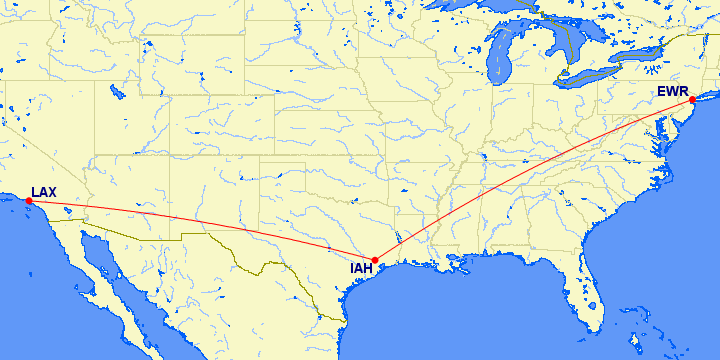 777-200 Certification\Test Flights: 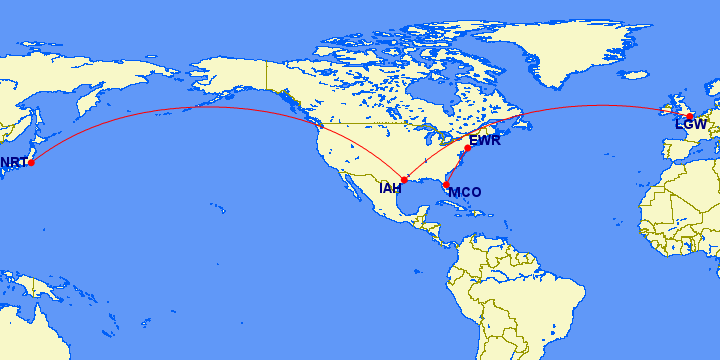 777-200 Factory Delivery Flight: 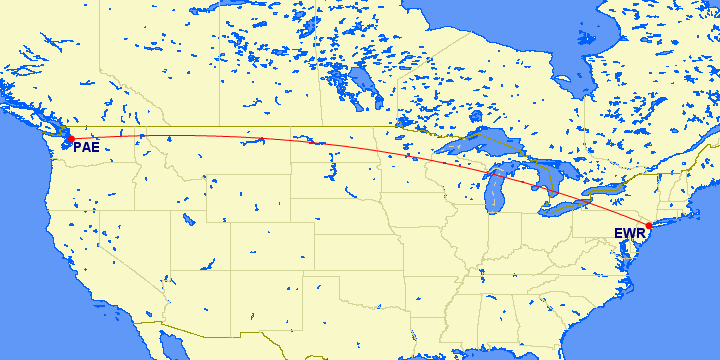 DC-10-30: 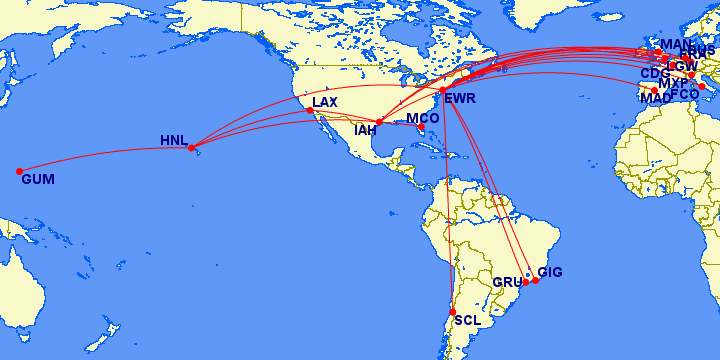 DC-10-30 Retirement Flights: 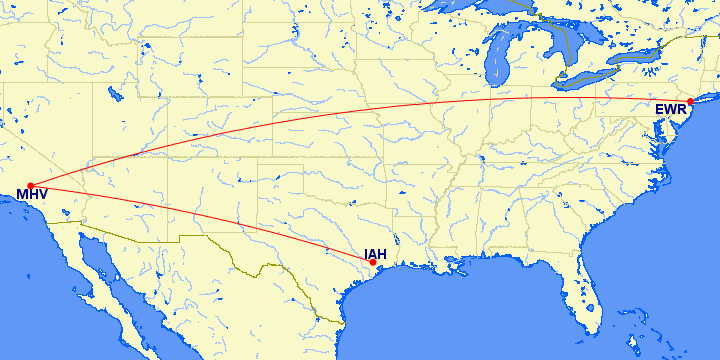 757-200: 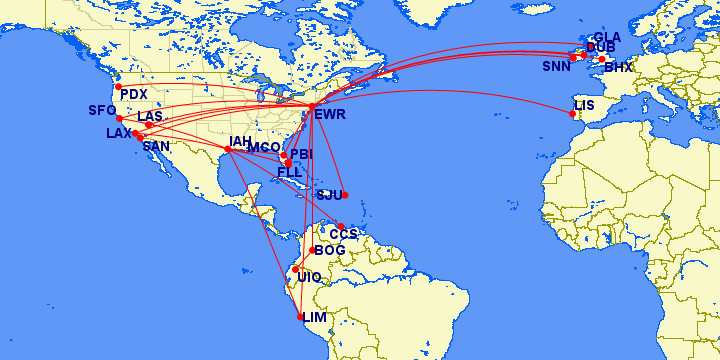 727-200: 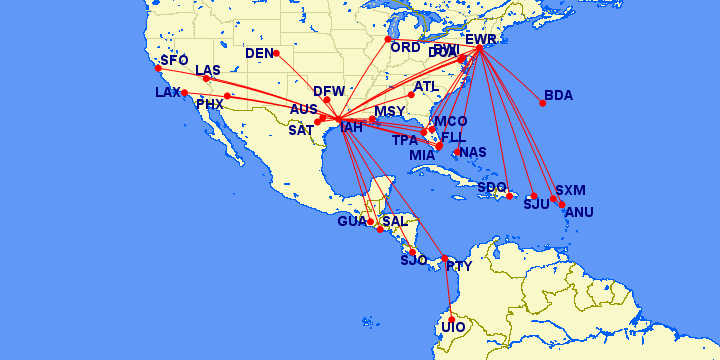 MD-81\82:  737-800: 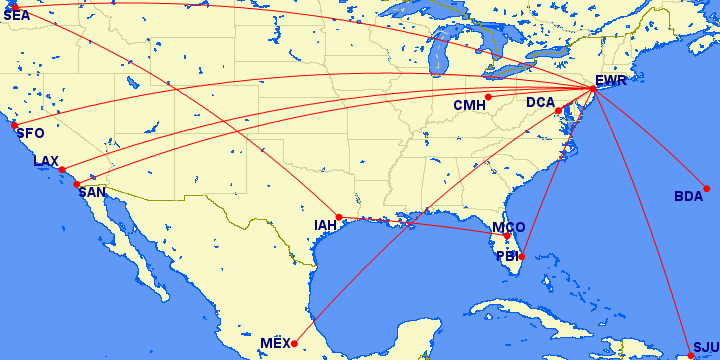 737-700: 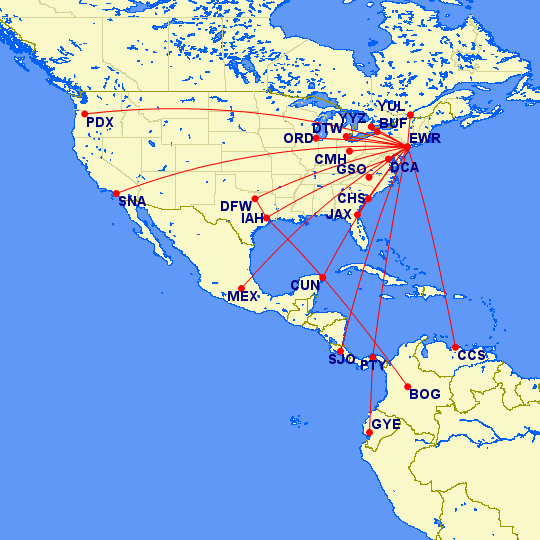 737-500:  737-300: 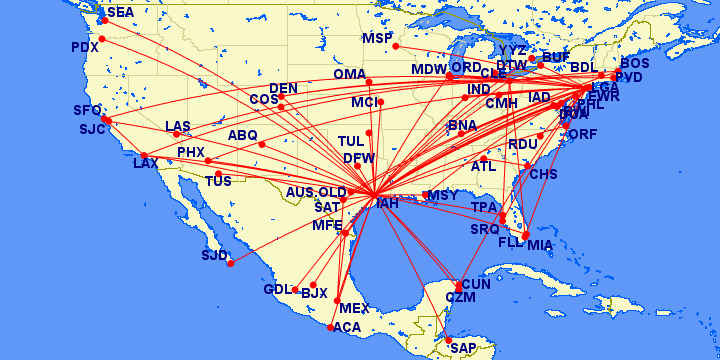 737-100\200: 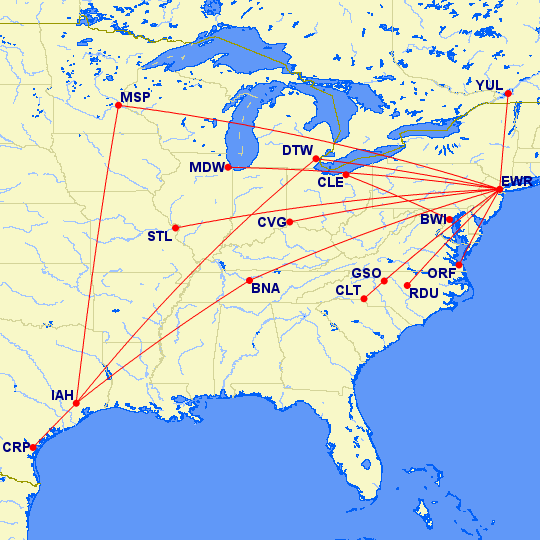 DC-9-30: 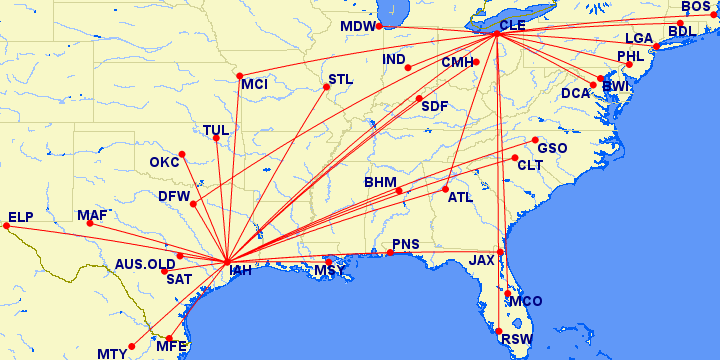 737-700\800 and 757-200 Factory Delivery Flights:  DC-3A operated by Continental Airlines Historical Society: 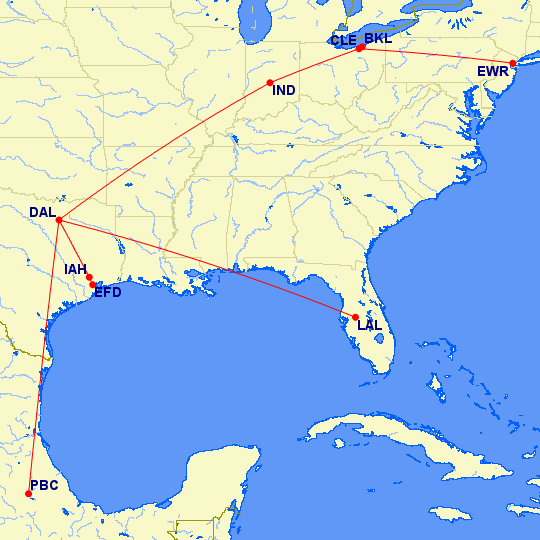 Download Continental Airlines 1998 Flightplans Here Download Continental Airlines 1998 Flightplans Here |
|
fernbe
Gate Agent
  1990's and 2000's
1990's and 2000's
Posts: 72
|
Post by fernbe on Nov 19, 2022 10:01:54 GMT -5
I find a great idea on creating separate flightplans for a specific flight simulator, such as FS9 and FSX, because there's still a lot of people who use these both simulators, and I hope in the future, someone also decides to convert the P3Dv4-5 retro sceneries for FSX. For FS9 I would think it would be too hard or even impossible due to the way how P3D scenery files are compiled, and they are much closer to FSX than FS9.
|
|